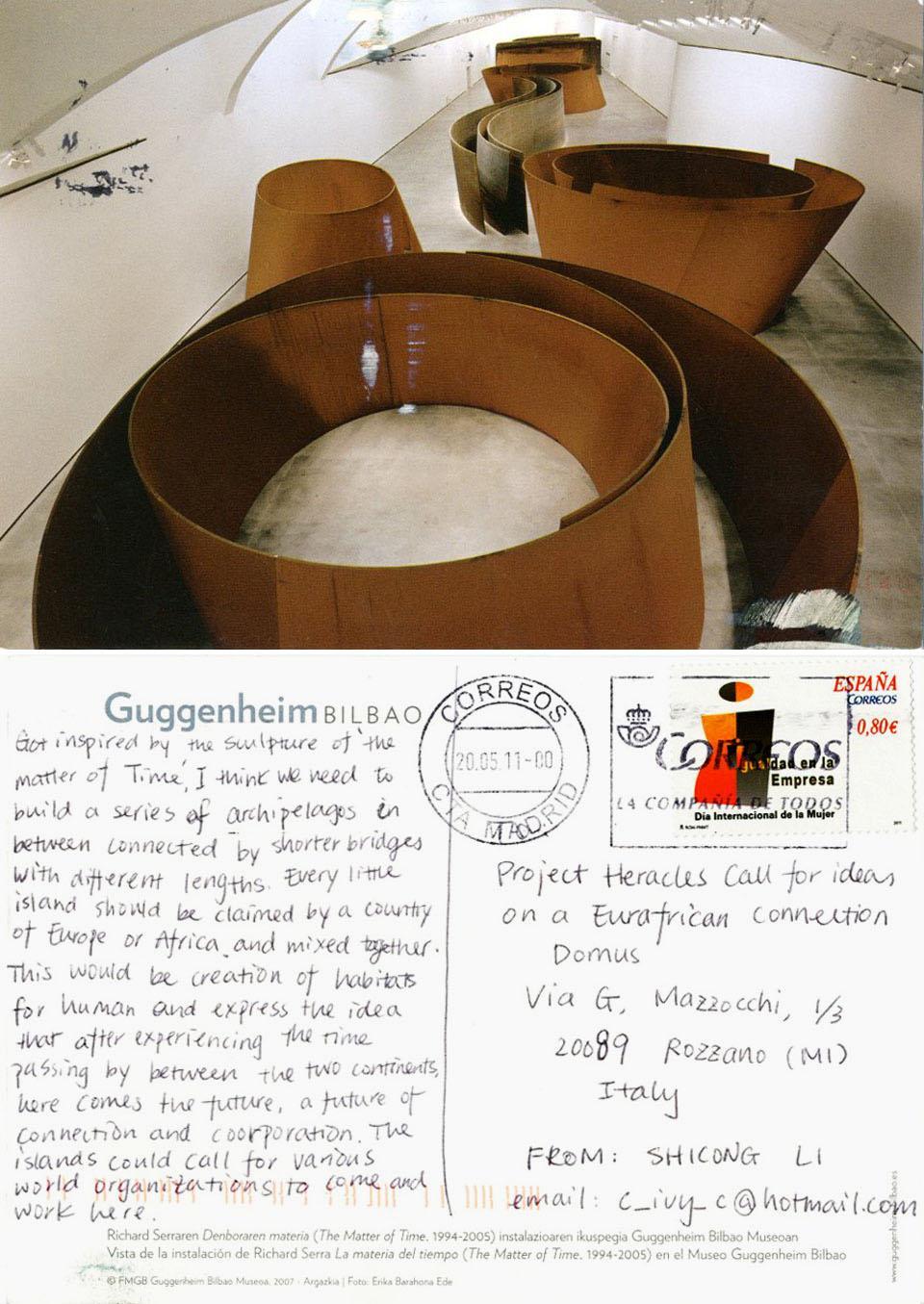Please, not another bridge
I looked carefully, trying to resist the kind of overload that comes when you get more than a hundred proposals. I worked backwards in order to give everyone an equal opportunity, and slowly I felt something come to the surface that was similar to a criterion that would help guide me through the sequence. I thought primarily about two issues. The first is that the Strait of Gibraltar (a blatantly Eurocentric name) is not only a space that separates Europe from Africa but it is also space that allows access to a place that, in many ways, unites them: the Mediterranean. So I like the proposals that take this into account and introduce the theme of the mare nostrum, a unifying sea, into the project, somehow shifting its perspective.
The second theme concerns the continuity/ discontinuity between the two lands, always starting with a kind of instinctive hostility to the idea that the response to a call like this should be the design of a bridge. So, islands, moving and floating archipelagos that allow the circumnavigation of mare nostrum without interrupting the flow through the straits. I like the intangible projects even more; suspended between landscape and a strange idea of a global scale public art project that can define a space without changing it. Hence the choice of the balloons, wires, colors, dual events (on both coasts) that have the merit of combining meaning and lightness.
Postcard #18. [top image] The idea of an inhabited raft is not a bad one, although the proposed form goes awry with excessive architecture and some heaviness. But I support the program.

..jpg.foto.rmedium.jpg)
The Strait of Gibraltar (a blatantly Eurocentric name) is not only a space that separates Europe from Africa but it is also space that allows access to a place that, in many ways, unites them: the Mediterranean.
..jpg.foto.rmedium.jpg)
..jpg.foto.rmedium.jpg)
..jpg.foto.rmedium.jpg)
..jpg.foto.rmedium.jpg)
.jpg.foto.rmedium.jpg)
..jpg.foto.rmedium.jpg)


1.jpg.foto.rmedium.jpg)